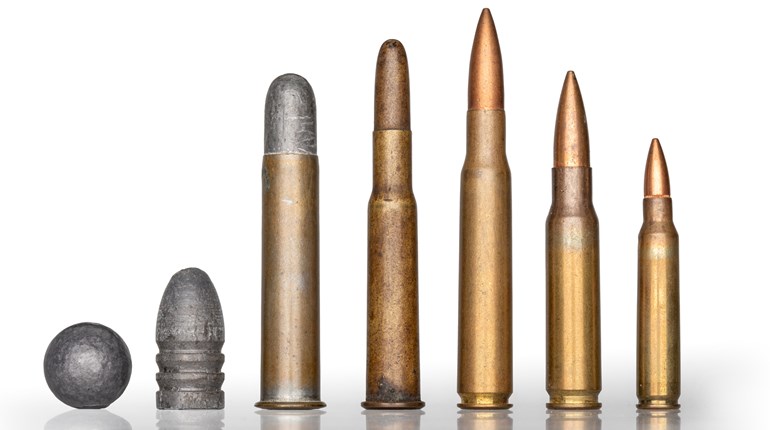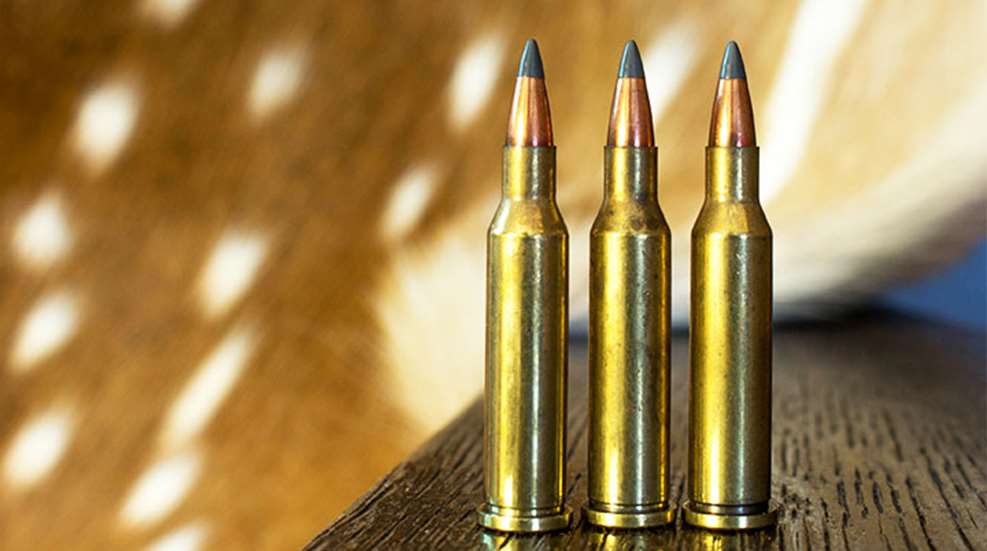
We were sitting on a hot section of one of the incredibly vast prairie dog towns which make South Dakota’s Rosebud Reservation, taking turns with various rifle/cartridge combinations. Included in the mix were some great rimfires, such as the .22 Long Rifle and .22 Winchester Magnum Rimfire, the .17 Hornady Magnum Rimfire and .17 Winchester Super Magnum, some classic centerfires like the .22-250 Remington, .22 Hornet and .223 Remington and one which really grabbed my attention: the .17 Hornet.
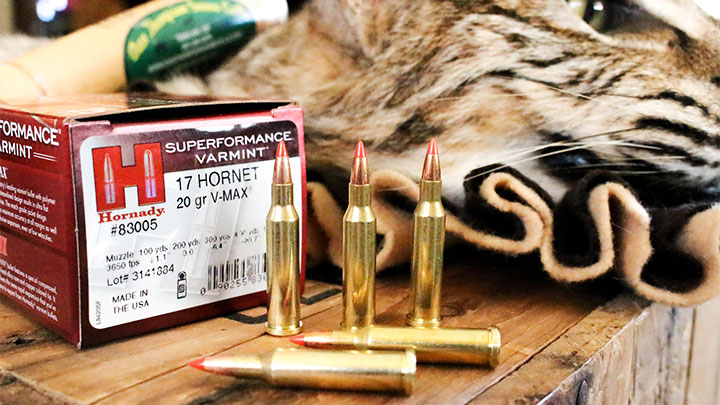
The .17-caliber cartridges have been around for over 70 years in wildcat form, though in commercial form they made their debut in 1971 when Remington released their .17 Remington, a screaming varmint cartridge based on the .223 Remington necked down to hold .172-inch diameter bullets. With mediocre interest, the .17 bore sort of struggled along until Hornady released the .17 HMR in 2002, and its younger brother the .17 Mach II in 2004. Remington released its second .17 centerfire in 2007—the .17 Fireball—and in 2012 Hornady got SAAMI approval for the .17 Hornet, which had been a wildcat since the early 1950s.
Charles O’Neil—part of the trio of rifle cartridge developers responsible for the OKH cartridges, including Elmer Keith and Don Hopkins—had the idea of .17-caliber cartridge, but the concept wouldn’t see the light of day until P.O. Ackley would swage his own bullets for his .17 Pee Wee wildcat. Ackley would go on to neck down the .218 Bee and the .22 Hornet. Ackley’s .17 Hornet used a 30-degree shoulder, which differs from the Hornady design, but there’s no denying that the seed was planted. Ackley’s loading advice was to fill the case with DuPont IMR 4198, scrape off any powder sticking out beyond the case mouth and use the bullet to compress the load.
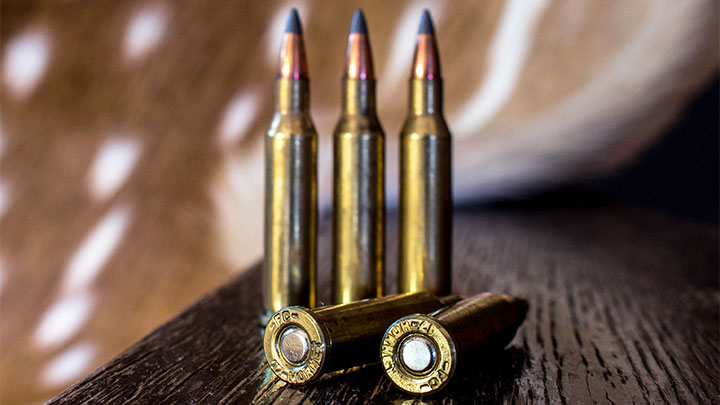
The Hornady variant—some sixty years younger—uses minimum body taper, and a case length a bit shorter than its parent case (1.350 inches for the .17 Hornet vs. 1.403 inches for the .22 Hornet). The cartridge overall length is the same for both cartridges at 1.723 inches, so that both cases can share the same magazine. Hornady’s .17 Hornet case uses a 25-degree shoulder, which cuts down minutely in comparison to Ackley’s 30-degree shoulder, though the modern advancements in powder technology will more than make up for the difference in case capacity. Like the .22 Hornet, the .17 Hornet uses its rim for headspacing.
Currently there are three loads in production for the .17 Hornet. Hornady, who offered three different loads at one time, still offers their 20-grain V-Max bullet in their Superformance line, at a muzzle velocity of 3650 fps. This load will stay supersonic out to 500 yards—though at that distance is has a mere 85 ft.-lbs. of energy—and shoots rather flat. Using a 200-yard zero, that bullet will strike 1.1 inches high at 100 yards, making it a dead hold for any varmint inside of 200 yards, and will strike 6.4 inches low at 300 yards, 20.4 inches low at 400 yards and 46.8 inches low at 500 yards. Looking at the trajectory of the .300 Winchester Magnum and a 180-grain bullet, or the .223 Remington with the 55-grain Hornady V-Max, the trajectories are very similar. Federal offers a 20-grain Tipped Varmint bullet in its American Eagle line, with a muzzle velocity of 3610 fps, and Winchester offers a 20-grain Polymer Tip Rapid Expansion bullet in their Varmint X line of ammo, at a muzzle velocity of 3650 fps, identical to the Hornady load.
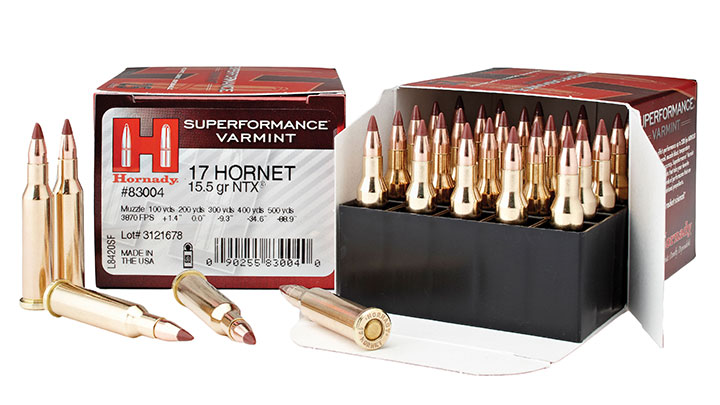
The issue with the speedy .17 Hornet is that the wind can have a much more pronounced effect on those tiny little bullets than the more conventional varmint cartridges, with wind drift at 500 yards needing 14 inches more compensation for the .17 Hornet than with a 55-grain .223 Remington load. The benefit of the cartridge is that the felt recoil is little more than the .22 WMR; making it perfect for extended shooting sessions at the bench, in the woodchuck-infested alfalfa fields or over the hottest prairie dog towns. It makes a great choice for furbearers – including the foxes, bobcats and even the largest coyotes – as the bullets loaded in the .17 Hornet are frangible enough to avoid large exit wounds and the resulting pelt damage.
The .17 WSM—a smoking rimfire which drives that 20-grain V-Max to 3000 fps—is a good choice for those who have no interest in reloading ammo, or the ability to reload cartridges in this class. The .17 WSM, in spite of its lower muzzle velocity, is a great cartridge, but having used the pair back-to-back, I could definitely see a difference in how hard they hit, with the additional 600 to 650 fps of the .17 Hornet making a visual difference. The .17 WSM ammo is considerably cheaper than the .17 Hornet (just under half the price), but again, the rimfire cannot be reloaded with the precision and accuracy that the centerfire cartridge can be. Comparing the .17 Hornet to the .22 Hornet or .218 Bee, you will immediately see the benefits of the smaller, speedier cartridge, as it makes longer shots much easier.
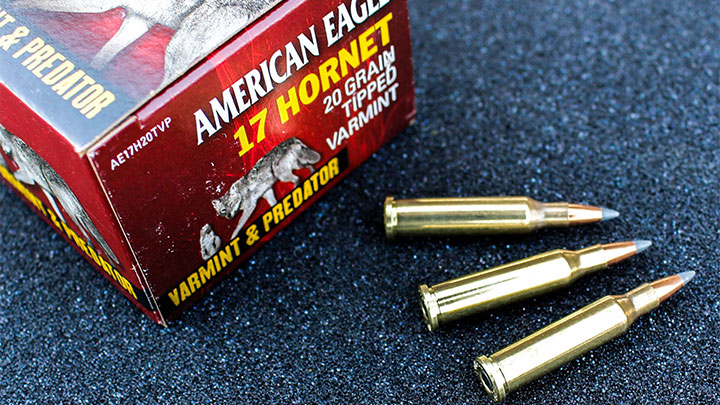
If you are intrigued with the sub-caliber cartridges, you could do a helluva worse than the .17 Hornet. I enjoy shooting it—even though the tiny bore requires special cleaning tools—for its pinpoint accuracy and minimal recoil, and for my predator/varmint hunting needs, it checks all the boxes.
Looking for previous installments of our "Behind the Bullet" series? We've got you covered.
• 7mm STW
• 6.8 Western
• .375 Ruger
• .223 Remington
• 6.5x55 Swedish
• .416 Remington Magnum
• .300 Winchester Short Magnum
• 28 Nosler
• 6.5 PRC
• .22 WMR
• .458 Winchester Magnum
• .22 Hornet
• .280 Ackley Improved
• .240 Weatherby Magnum
• .458 Lott
• .264 Winchester Magnum
• .348 Winchester
• .33 Nosler
• .260 Remington
• .30-30 Winchester
• .416 Rigby
• .358 Norma Magnum
• .22 LR
• 7mm-08 Remington
• 8mm Remington Magnum
• .338 Federal
• .224 Valkyrie
• .338-06 A-Square
• 9.3x62mm Mauser
• .257 Weatherby Magnum
• .45-70 Government
• .300 H&H Magnum
• .25-06 Remington
• .30-06 Springfield
• 6.5 Creedmoor
• .300 Remington Ultra Magnum
• 7mm Remington Magnum
• .470 Nitro Express
• .280 Remington
• .300 Winchester Magnum
• .270 Winchester
• .222 Remington
• .45 ACP
• .404 Jeffery
• .44 Remington Magnum
• .41 Remington Magnum
• .243 Winchester
• .338 Winchester Magnum
• .357 S&W Magnum
• 6.5-284 Norma
• 8x57 Mauser
• .38 Smith & Wesson Special
• 7x57mm Mauser
• 9mm Luger
• .35 Whelen
• .454 Casull
• .375 H&H Magnum
• .45 Colt
• .22-250 Remington
• 10mm Auto
• .308 Winchester














